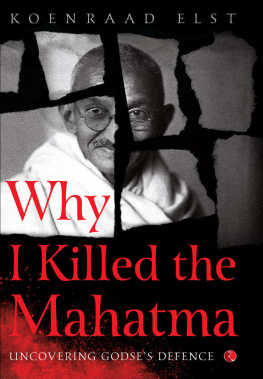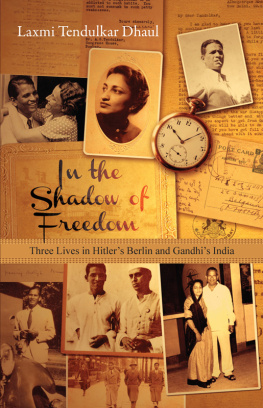Dhirendra K. Jha - Gandhis Assassin: The Making of Nathuram Godse and His Idea of India
Here you can read online Dhirendra K. Jha - Gandhis Assassin: The Making of Nathuram Godse and His Idea of India full text of the book (entire story) in english for free. Download pdf and epub, get meaning, cover and reviews about this ebook. year: 2022, publisher: Penguin, genre: Detective and thriller. Description of the work, (preface) as well as reviews are available. Best literature library LitArk.com created for fans of good reading and offers a wide selection of genres:
Romance novel
Science fiction
Adventure
Detective
Science
History
Home and family
Prose
Art
Politics
Computer
Non-fiction
Religion
Business
Children
Humor
Choose a favorite category and find really read worthwhile books. Enjoy immersion in the world of imagination, feel the emotions of the characters or learn something new for yourself, make an fascinating discovery.
- Book:Gandhis Assassin: The Making of Nathuram Godse and His Idea of India
- Author:
- Publisher:Penguin
- Genre:
- Year:2022
- Rating:5 / 5
- Favourites:Add to favourites
- Your mark:
- 100
- 1
- 2
- 3
- 4
- 5
Gandhis Assassin: The Making of Nathuram Godse and His Idea of India: summary, description and annotation
We offer to read an annotation, description, summary or preface (depends on what the author of the book "Gandhis Assassin: The Making of Nathuram Godse and His Idea of India" wrote himself). If you haven't found the necessary information about the book — write in the comments, we will try to find it.
Gandhis Assassin: The Making of Nathuram Godse and His Idea of India — read online for free the complete book (whole text) full work
Below is the text of the book, divided by pages. System saving the place of the last page read, allows you to conveniently read the book "Gandhis Assassin: The Making of Nathuram Godse and His Idea of India" online for free, without having to search again every time where you left off. Put a bookmark, and you can go to the page where you finished reading at any time.
Font size:
Interval:
Bookmark:



PENGUIN BOOKS

PENGUIN BOOKS
In Gandhis Assassin, Dhirendra K. Jha has anatomized, with calm resourcefulness, the politics and psychology of a fanatic. He has also written a secret and sinister history of modern Indiathe one we need to understand our ruinous presentPankaj Mishra, author
This book goes beyond the plot that resulted in Mahatma Gandhis assassination, which the author meticulously analyses. It is indeed highly revealing of the omnipresence of the RSS on the Indian political scene in the 1940s. If the organization did not fight British colonialism and did not contest elections, it was intimately related to Savarkars Hindu Mahasabha, the first Hindutva party, and, more importantly, organically linked to the Hindu Rashtra Dal, a militant body co-founded by Nathuram Godsea man who, as Dhirendra K. Jha shows, never left the RSSChristophe Jaffrelot, research director, CERI, Sciences Po and CNRS, and Avantha Professor of Indian Politics and Society, Kings India Institute
Dhirendra Jhas book is not just a very readable and credible account of the plot and the people behind Gandhis murder, including a psychological analysis of his assassin, but a comprehensive study of the wider politics of the Hindu Mahasabha, the RSS and their leaders, including Savarkar, which makes it a must-read and highly relevant in todays contextMridula Mukherjee, Professor, Modern Indian History (retired), Centre for Historical Studies, Jawaharlal Nehru University

Nathuram Godses head ached but his eyes remained fixed on the entrance to the lawn of Birla House. A wing of this grand New Delhi mansion served as the living apartment for Mahatma Gandhi. Blending into the crowd gathered in the lawn, Godse waited stealthily about ten paces from the main gate, positioning himself right along the way Mohandas Karamchand Gandhi would take to reach the wooden podium from which he led his evening prayer meetings. From his reconnaissance of the prayer ground, Godse knew that Gandhi could appear at any moment. It was quarter past five in the evening on Friday, 30 January 1948. The air was cool on his face, and above him the sky had turned grey, almost ready to be enveloped in darkness.
The assemblage stirred. Godse saw Gandhi emerge at the entrance,
Godse reached for the pistol in his pocket and released the safety.
Then, in one furious movement, Godse stepped in front of Gandhi, his hands folded over his pistol. Now I stood at a distance of one and a half feet from Gandhi, Godse recounted, I said namaste Gandhiji, and then I pointed at his chest and fired. It was seventeen minutes past five.
The horrified crowd, nearly 200 in
The 32-year-old American,
Godse was whisked away by the police. He was first kept in a room on the ground floor of Birla House and then shifted to the Tughlak Road police station, about 1.5 kilometres away, in central Delhi.
A reporter, who saw Godse soon after he was
Godse got up from his seat when the reporter approached him. The journalist threw

The reporter was right in his observationGodse was not twenty-five, but thirty-eight. There was something striking about this exchange between the two. Godses attempt to conceal his real age fit in with the traits that had emerged in his childhood and developed deep roots in him. His craving for a virile image meant that he resented anyone making a note of the fact that he had passed his youth and was nearly middle-aged.
This desire of a masculine image had shaped the style and actions of his past life, and it seemed to be a prominent force even after he killed Gandhi. The artifice dominated Godses thinking from his formative years.
Godse was born on 19 May 1910 in Baramati, a small town in Poona district of the Bombay Presidency. His father, Vinayakrao Godse, was a petty government official who worked in the postal department and his mother, Lakshmi, a devoted housewife. They belonged to the Brahmin community, an elite social group that is said by legend to have emerged from the brain of Lord Brahma, the mythical creator of the universe. Brahmins see themselves as the upholders of Hinduism, a religious system which rests on a belief in supernatural powers embodied in idols, stars, planets, rivers, trees, sacred animals, and divine men and women. It stresses on castes, that is, birth-based hierarchical arrangement of endogamous social groups. Theologically, Brahmins occupy the apex of Hinduisms social pyramid, enjoying a complex set of privileges and observing a baffling combination of restraints. Originally, they were, as per Hindu mythology, mendicants and philosophers living apart from the material world and its temptations, but through centuries they were transformed into a priestly class.
This was a society where social roles were rigid and preordained, and public and intellectual life was dominated by religious texts, rituals and caste identities. Superstitions and legends controlled their vitals so deeply and revealingly that by the time of Godses birth, his parentsas also a significant section of Brahminsremained ambivalent towards the changing social environment that resulted from the spread of modern scientific education and liberal tendencies in late nineteenth- and early twentieth-century India.
Godse was the fourth son in the family. Three older sons, born in 1901, 1904 and 1907, had all died in infancy. Only Mathura, a daughter born in 1898, the first offspring of Vinayakrao and Lakshmi, had survived. There was, therefore, a deep sense of anxiety in the family when Lakshmi gave birth to her fourth son. With some medical help, they might have worked themselves out of the difficult situation and the subsequent history of their familyand of Indiamight have turned out quite differently. But the world of Godses forefathers, filled with superstitions, meant much to his parents, who saw in the terrifying deaths of their infant sons the role of a divine curse which allowed only their female child to remain alive.
So, when Godse was born, his parents decided not to take any chances. To trick fate, the newborn even though his official name was Ramachandra Vinayak Godse.
Godse survived. A few years later, his mother gave birth to another son, Dattatreya. Thereafter, they had a daughter Shanta, followed by two more sons, Gopal and Govind. They believed that Godse had rid the family of the curse.
But Godse appeared to have been discomfited by notions of virile masculinity. He played with girls of his age
As his early years were entangled in superstition, the heightened religiosity that they bequeathed to him may have overwhelmed him even after he gave up the female attire and began going to school. All available testimony about Godses childhood suggests that he was not particularly social and at times had trouble communicating and became an ardent devotee of the family deities early on. As a preadolescent boy, he also claimed to have acquired the ability to occasionally go into a trance and speak as an oracle. In an orthodox Brahmin family, this was talked of with pride, filling the child with a strong sense of being among the chosen few.
Font size:
Interval:
Bookmark:
Similar books «Gandhis Assassin: The Making of Nathuram Godse and His Idea of India»
Look at similar books to Gandhis Assassin: The Making of Nathuram Godse and His Idea of India. We have selected literature similar in name and meaning in the hope of providing readers with more options to find new, interesting, not yet read works.
Discussion, reviews of the book Gandhis Assassin: The Making of Nathuram Godse and His Idea of India and just readers' own opinions. Leave your comments, write what you think about the work, its meaning or the main characters. Specify what exactly you liked and what you didn't like, and why you think so.

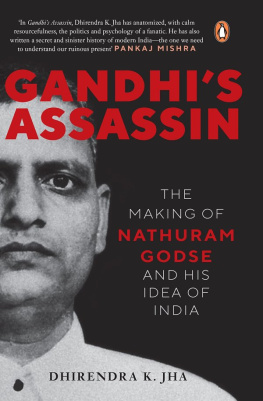
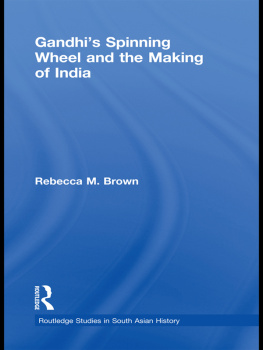
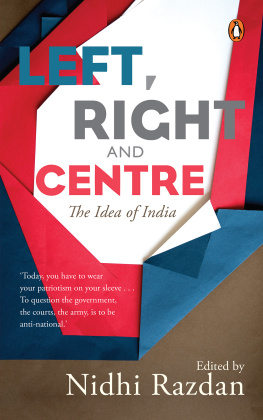

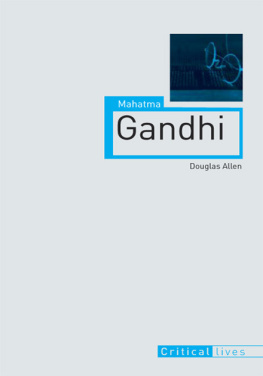

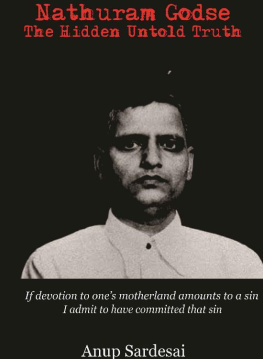
![Jay Godse [Jay Godse] - Ruby Data Processing: Using Map, Reduce, and Select](/uploads/posts/book/124108/thumbs/jay-godse-jay-godse-ruby-data-processing-using.jpg)
